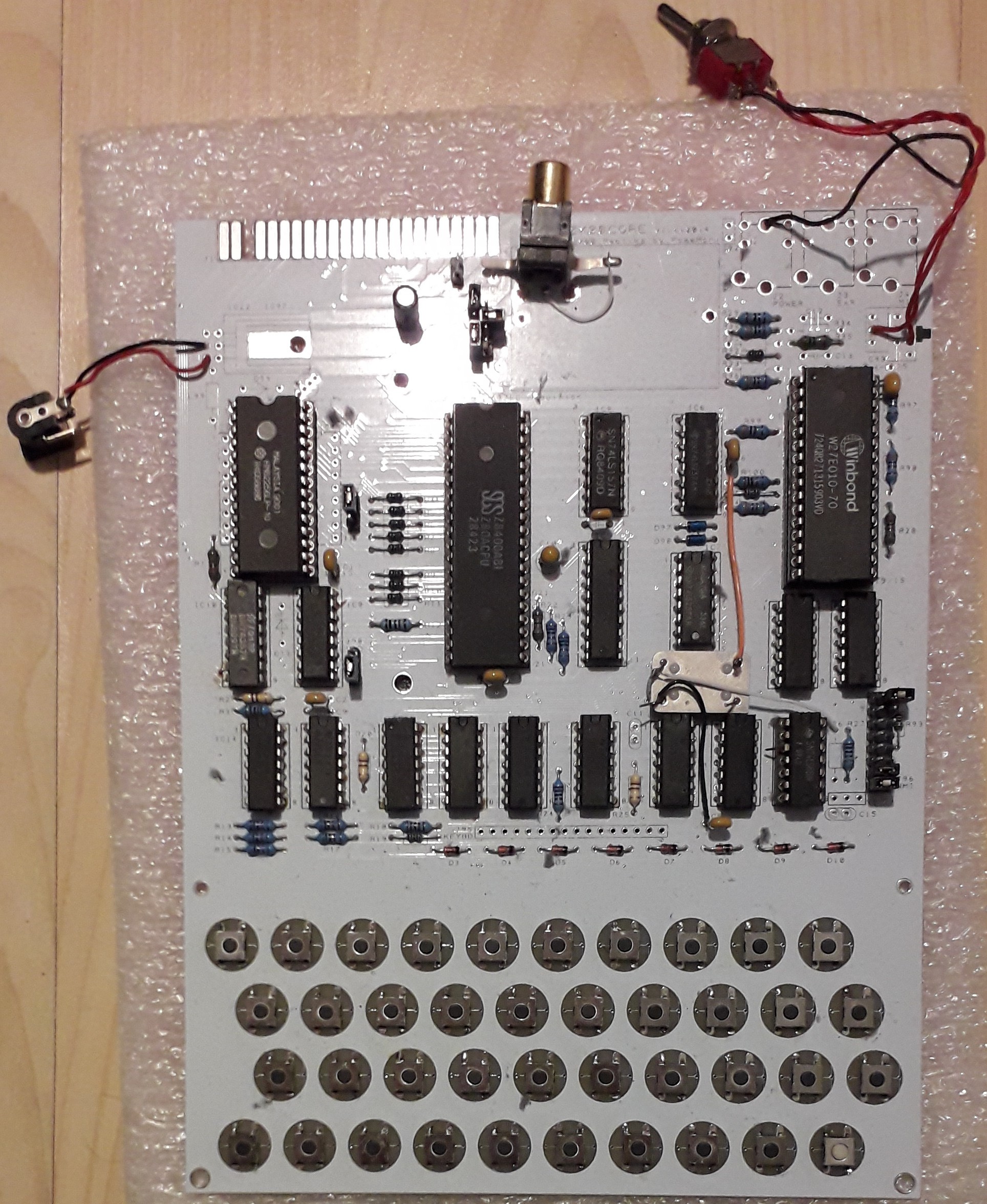The ZX80 is more hackable than the ZX81 because all the logic chip signals are accessible.
I bought a PCB and populated it with good quality turned-pin sockets and new chips.
I noticed it was still prone to crashing even without an external RAM pack.
I suspected that socket connections were intermittent, especially when the PCB was being flexed by pressing the keyboard.
I removed the sockets of the TTL chips and soldered the TTL chips directly to the PCB. This was a great improvement.
Lessons learnt:
- Sockets are more trouble that they are worth. Avoid them!
- Socket contacts fail when PCBs are flexed. Avoid this.
- Putting the keyboard on the same PCB as socketed chips is a bad idea for the reasons above.

I fitted a 32K RAM chip, to banish RAM-pack wobble crashes forever.
I fitted tactile switches salvaged from scrap boards. The buttons are low-profile, so they don't click so well when pressed by a finger. Some kind of key tops, or higher-profile keys, would fix this.
For square-pixels, the clock was changed from 6.5 to 7.732 MHz. I used a DIP14 oscillator in a metal can, but changing the crystal would also work and look neater. The rest was firmware modding. I added a SPDT switch to select the standard or alternative firmware. I used my modified ZX81 BASIC firmware, but you could just as easily select ZX81 Forth or anything else.
 Keith
Keith
Discussions
Become a Hackaday.io Member
Create an account to leave a comment. Already have an account? Log In.